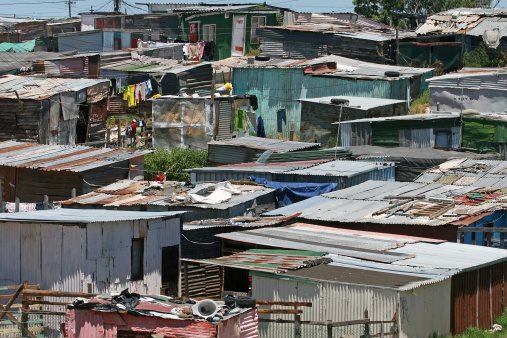
The Troubling Causes for Displaced Persons
With over 80 million people worldwide being forcibly displaced from their homes, the issue of displacement has become one of the most critical challenges facing our global community. Nearly 30 million of these individuals are classified as refugees, a term that refers to those who have fled their countries of origin due to persecution, war, or violence. The remaining individuals are internally displaced persons (IDPs), who have been forced to flee their homes but continue to reside in their country of origin. There are numerous causes of displacement, ranging from climate change to conflict and political instability. In this article, we will examine some of the most troubling causes of displacement and their implications for the global community.
Conflict and Political Instability
One of the most common causes of displacement is armed conflict and political instability. According to a report by the United Nations High Commissioner for Refugees (UNHCR), more than 70% of the world’s refugees come from just five countries: Afghanistan, Syria, South Sudan, Myanmar, and Somalia. Each of these countries has experienced significant conflict or political instability in recent years, leading to the displacement of millions of individuals.
The conflict in Syria, which began in 2011, has led to the displacement of over 6 million Syrians, with another 5 million seeking refuge in neighboring countries. Similarly, the civil war in South Sudan, which broke out in 2013, has resulted in the displacement of more than 4 million people. In Myanmar, the Rohingya crisis has caused over 900,000 Rohingya Muslims to flee to neighboring Bangladesh. Political instability in Afghanistan and Somalia has also led to the displacement of millions of individuals.
The implications of displacement due to conflict and political instability are far-reaching. Not only do refugees and IDPs face the challenge of finding a new home, but the host countries often struggle to provide adequate support and resources. Additionally, conflict and political instability can have a lasting impact on a country’s economy, social fabric, and security.
Climate Change
Climate change is becoming an increasingly significant cause of displacement. The Intergovernmental Panel on Climate Change (IPCC) predicts that climate change will cause a rise in sea level, more frequent and severe weather events, and water scarcity, among other changes. These impacts will have serious consequences for many communities worldwide, particularly those living in low-lying coastal areas or regions already facing water scarcity.
Displacement linked to climate change is already happening, with some estimates suggesting that the number of climate refugees could reach 200 million by 2050. In places like the Pacific island nations of Kiribati and Tuvalu, rising sea levels are causing coastal erosion and flooding, leading to the displacement of entire communities. In the Horn of Africa, droughts and desertification are forcing many people to flee their homes in search of water and food.
The implications of climate change-related displacement are immense. It is likely to exacerbate existing conflicts and political instability and will require a significant humanitarian response. Additionally, it may drive further migration and displacement as communities seek new homes and livelihoods.
Persecution and Discrimination
Persecution and discrimination based on factors such as ethnicity, religion, or sexuality can also lead to displacement. In some cases, entire communities are targeted, such as the Rohingya in Myanmar or the Yazidis in Iraq. LGBTQ+ individuals may also be forced to flee their homes if they fear persecution or violence.
The implications of displacement due to persecution and discrimination are significant. Not only do refugees and IDPs face the challenge of finding a new home, but they also often face discrimination and marginalization within their host communities. In some cases, their rights and safety may be further threatened by an environment that is hostile to their presence.
Gender-Based Violence
Gender-based violence, including sexual violence and harassment, is a significant cause of displacement, particularly for women and girls. According to the UNHCR, one in three refugee women experience sexual violence, and women account for nearly half of all refugees worldwide.
The implications of displacement due to gender-based violence are severe. In addition to the trauma of the violence itself, women and girls are often at increased risk of further violence or exploitation while in transit or in camps. Additionally, they may face discrimination and marginalization within their host communities, further limiting their opportunities for safety and stability.
Conclusion
Displacement is one of the most significant challenges facing our global community. There are numerous causes of displacement, ranging from conflict and political instability to climate change, persecution, discrimination, and gender-based violence. Each of these causes has far-reaching and complex implications for both individuals and societies as a whole. Addressing displacement will require a coordinated and international response, including the provision of support and resources for refugees and IDPs, the development of solutions to climate change, and efforts to reduce conflict and persecution worldwide.
Displaced persona did not come to international attention only after World War II. Rather, World War II led to a crisis. Displaced persons could not be left to rebuild such destruction after World War II, so the newly created United Nations maintained a specific interest in providing for these individuals.
Another primary cause of the growing situations surrounding the difficulties of a displaced person came from decolonization ranging from Asia to Africa. The withdrawal of world powers left weak political institutions that would result in further unrest between large segments of entire populations.
Historically, the idea of a displaced person resonated but never enticed global consideration. Migration was a major part of life and not seen as extraordinary. As nation-states began forming from large expanses of previously colonized land, there was simply nowhere for a displaced person to reestablish. This made it abundantly clear that the international community would have to issue collaborative instruments to deal with current and future crises caused by displaced persons.






















